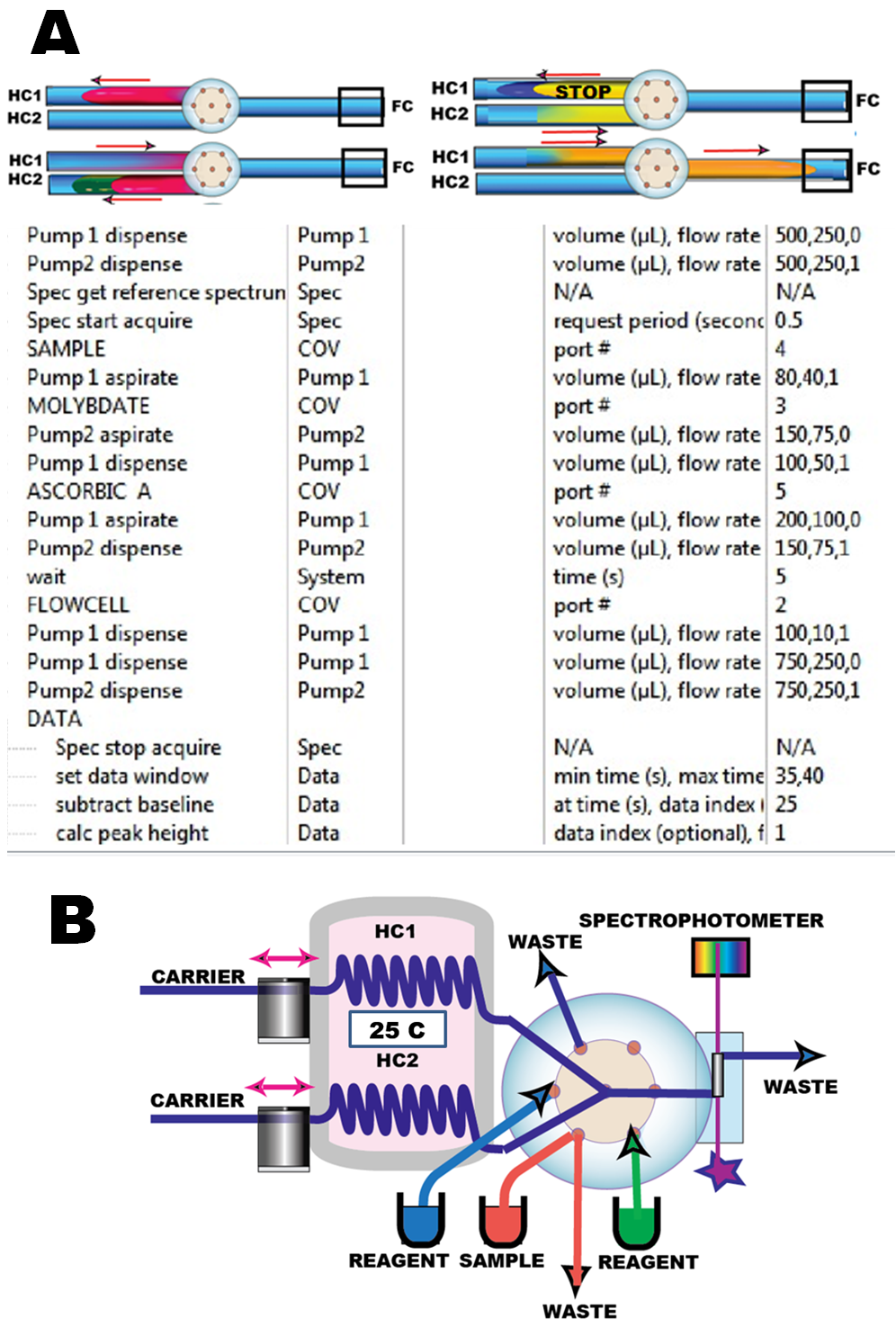pFI: Two Reagent Assay by SHC; o-Phosphate
Two Transfers
The assay protocol (A) is based on principle outlined for SHC method (1.2.27.) and comprises the following steps:
1) sample aspiration into HC1,
2) sample transfer to HC2 at a flowrate of 100mcrL/sec, while flowrate of 150mcrL second was aspirated into HC2, and reagent port #3 was open to molybdate reagent. Thus the molybdate was mixed with sample at the confluence point in ratio 1:2.
3) Next the thus formed phosphomolybdate was transferred from HC2 to HC1 at a flowrate of 150 micrL/sec, while flowrate of 200mcrL/sec was aspirated into HC1, while the reagent port #5 was open to ascorbic acid. In this way phosphomolybdate was mixed with ascorbic acid at the confluence point in the ratio 3:1.
4) After 5sec long WAIT period, port 2# was opened and the reduced phosphomolybdenum blue was transported trough flow cell at a rate of 10mcrL/sec.
In order to harmonize the volumes and flowrates in convenient and simple fashion, the flowrate of any individual operation was adjusted the at half value of the delivered volume.
The instrument (B) was furnished with 13cm long light path flow cell , molybdate and ascorbic acid reagents (C) and DI water was used as the carrier.
Formation of phosphomolybdenum blue is a two step reaction; fast formation of phosphomolybdate, followed slower reduction to phosphomolybdenum blue. Discovered more than 200 years ago, and being the most frequently used assay worldwide, the fundamental understanding of its chemistry is still under development, mainly because molybdenum blue is not a single species, but a family of reduced molybdate compounds (Nagul et.al.2015), which form at different rates, depending on reagent composition, acidity and temperature.
1.2.35.











